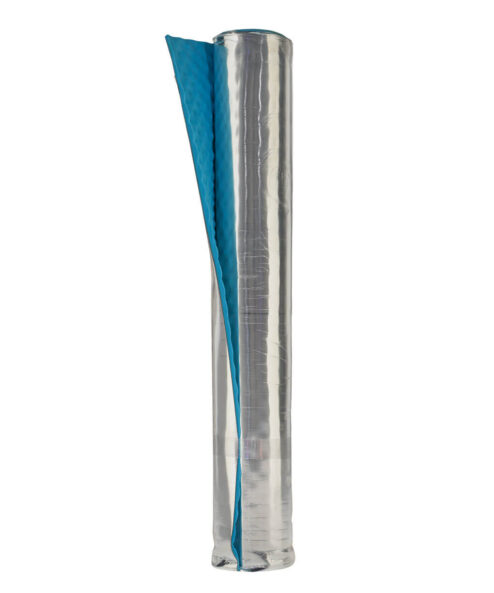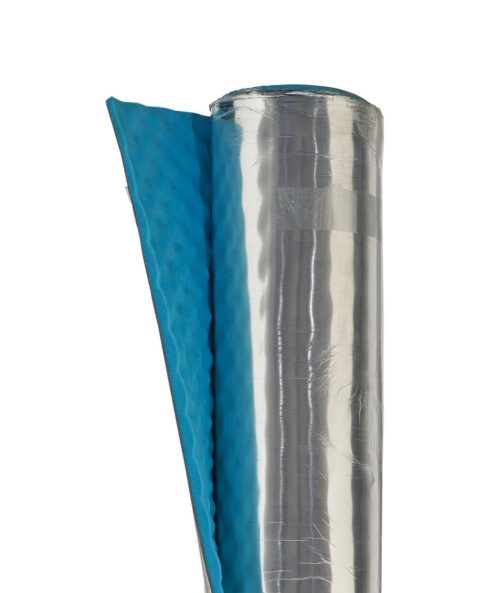Insulation Tips
Saving Money with Insulation: Should You Insulate Your Hot Water System?
These days it’s universally accepted that thermal insulation installed in the ceiling, walls and underfloor of a home improves comfort and reduces energy bills. If you’re looking for further ways to save on energy costs, consider hot water system insulation too.
Insulating your hot water system is an easy and effective way to reduce heat loss and improve the energy efficiency of water heating . In this article, we explain the benefits of insulating your hot water system and how to do it effectively.
ALSO READ – How To Make Your House Energy Efficient!
Heat Loss Through Hot Water Tank and Pipes
Energy is required to heat your water, but some of this heat can be lost through the pipes as the hot water travels from the water heater to the taps in your home. Heat can also be lost through the walls of your hot water storage tank.
Heat energy will flow from areas of high heat energy (inside your pipes and tank) to areas of low heat energy (outside). Insulation products, such as insulation blankets and pipe lagging, are made from materials that are good at resisting the flow of heat. This helps the heat stay inside your pipes and tank which means less energy is required to keep the water hot.
How to insulate Hot Water Storage Tank
Hot water storage systems can lose heat through the tank walls. More modern systems are designed with inbuilt insulation, but you may find that you need extra insulation.
A water heater blanket can be used on an electric water heater or a gas water heater to help prevent it from losing heat through the tank walls. If you have a gas storage system with a pilot light, an insulation jacket is unsafe to use as it may overheat the water in hot weather. When installing an insulating blanket or jacket, be sure that you understand and follow all safety requirements.
Reducing Energy Consumption with Pipe Lagging
It only takes a few simple alterations to conserve the energy used to heat your home and insulating your hot water pipes is an easy way to make a big difference. Pipe insulation is not very difficult to install and although it will take some hours to get it done, the effects will be long lasting.
Once installed, pipe insulation will help prevent heat from escaping through the pipe walls when hot water travels from the water heater tank to the taps in your kitchen, bathroom or laundry. This reduction in heat loss means your system won’t have to work as hard to keep the water hot, leading to savings on your electricity and water bills.
What is Pipe Lagging?
Lagging is insulation designed for pipes such as hot water pipes or HVAC pipes. It is used to reduce heat loss, condensation and noise from the pipes. In Australia, there are minimum standards for pipe insulation for new homes, depending on where you live. The regulations are outlined in the Building Code of Australia (BCA).
Pipe lagging can be made from foam, vinyl, polyethylene or glass wool and sometimes has a reflective foil layer. It is generally inexpensive to buy pipe lagging and the energy savings will soon pay off the insulation investment, giving you genuine savings every year.
How to Install Pipe Lagging
Installing pipe lagging is not very difficult and can be done as a DIY project if you are feeling confident. Follow the steps below for a safe and successful installation. Alternatively, you can hire a professional to install the pipe insulation for peace of mind.
1. Measure up
In order to know how much pipe lagging you need to buy, you’ll first have to measure the size and length of your pipes.
2. Buy pipe insulation and tape
It’s important to buy high quality pipe lagging as this will ensure the insulation performs well and will last for a long time. Some pipe lagging is not UV resistant and will break down faster with constant exposure to the sun. In addition to the pipe lagging, you will need reflective tape to secure the insulation in place and create an airtight seal.
3. Prepare to install
Gather your materials including a sharp utility knife, a towel or rag and tape. Make sure the pipes are clean and dry before installing the insulation. Wipe them down with the towel or rag. Measure and cut the lagging to fit the pipes.
4. Install the pipe lagging
Be sure to insulate the non return valve and the hot water system valve as these are very important for achieving the best results. The insulation should have a tight, snug fit around the pipes.
Trusted Pipe Lagging Suppliers
Pricewise Insulation sells a range of hot water pipe insulation products and can advise you on the best insulation solution. With years of experience our customer service operators can suggest a customised insulation strategy and help you create a home that is more energy efficient.
Ask us about tips or tricks to install insulation and you may find you make the job easier for yourself. Installing insulation correctly also means you get the best performance out of your investment.
Other Ways to Make Your Hot Water System More Energy Efficient
Combine hot water system insulation with these other strategies for even more savings on water heating energy. And then check out our tips on how to make your house energy efficient for great ideas on how to cut down your power bill.
Adjusting the Thermostat of your Hot Water System
If you are worried about the energy use of your hot water heater, turning down the thermostat may allow you to save energy on heating water. The ideal temperature depends on the type of hot water system you have.
There are two main types of hot water systems:
- Storage systems which heat the water and then store that hot water for use later.
- Continuous flow systems which only heat the water when it is required. These do not have a storage tank.
Storage systems must be set to at least 60 degrees celsius to avoid the growth of Legionella bacteria, but setting the temperature too high can be a waste of electricity. A continuous flow system should be set no higher than 50 degrees celsius.
Some systems may have a clearly accessible thermostat that can be set easily. However, if you are required to remove any panels, it is best to call a plumber in to ensure a safe job.
Optimal Positioning of Your Hot Water System
If you are building or renovating, consider the placement of your hot water system for the most efficiency. By placing your hot water system as close to the main outlets as possible will help reduce the distance that the water has to travel through the pipes which will in turn reduce the amount of heat loss through the pipes. Shorter piping will also mean less material costs which can help you save money on installation.
Install Water Saving Devices
Cut down on water wastage from your hot water system with these devices:
- Temperature controllers – these devices regulate the temperature of the water at the tap which means you won’t waste water trying to balance the temperature.
- Cold water diverters and recirculation systems – these devices push cold water back into the tank until the right temperature is reached. This prevents cold water from being wasted while you wait for it to heat up.
Hire Professionals to Install Hot Water System Insulation
Pricewise Insulation sells insulation supplies all over Australia and offers professional installation services in Melbourne and Sydney. Whether you are purchasing ceiling, wall, underfloor or pipe insulation, by booking in an installation service, you can be confident that the insulation will be installed correctly. Contact us today for your next insulation project and enjoy added comfort and savings all year round.






Most homes built in the United States are designed with ventilated attics. But why do attics need ventilation? You might be surprised to learn that a well-ventilated attic does a lot more than let some air in and out. It doesn’t matter if you live in Florida, Minnesota, in a new house or an old house, a well-ventilated attic is essential. Here are three compelling reasons.
Reduces energy costs
In hot climates or during summer months, excess heat builds up in the attic. On a 95 degree summer day, the attic can reach 160 degrees. Attic ventilation will expel this heated air from the attic, reducing stress on the HVAC system, reducing energy costs and improving comfort. The ducts, which have notorious leaks, can be lodged in the attic, which creates even more energy waste.
Prevents water damage
In cold climates, the main purpose of attic ventilation is to maintain a cold attic temperature to prevent ice dams. An ice dam is snow that melts from a roof that is too hot and refreezes at the level of the gutters to prevent water from flowing properly during the melting period. Ice dams have been known to push water into cracks in homes, leading to potentially devastating water damage.
Controls humidity
Temperature control and lower energy costs aren’t the only benefits of attic ventilation. Moisture produced in the home (from cooking, laundry, showers, etc.) can escape from the living space and reach the attic. Without proper ventilation, this moisture can build up in the attic and cause problems, such as damage to the roofing system and poor indoor air quality.
Hi
Do you sell insulation blankets for hot water systems?